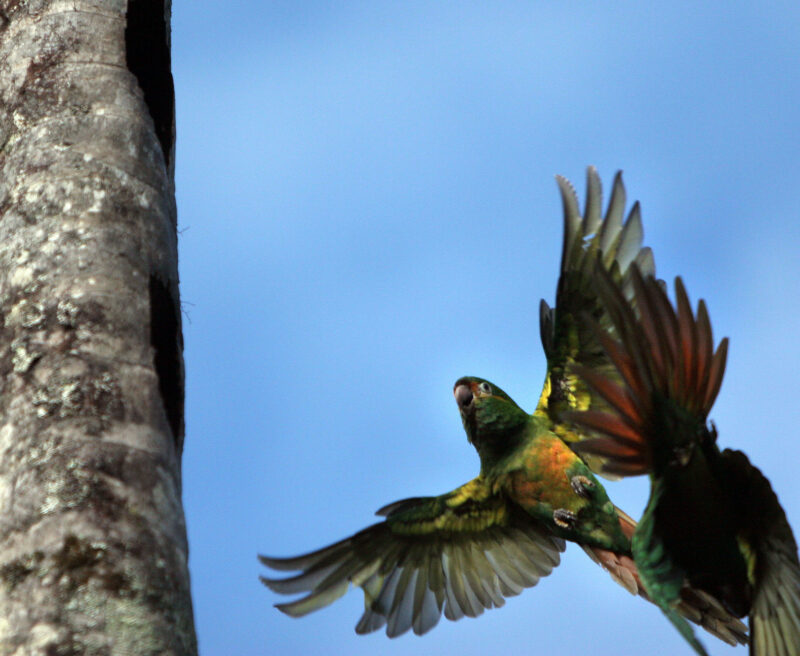Golden-plumed Parakeet
Species Data
Class: Aves
Order: Psittaciformes
Family: Psittacidae
Scientific Name: Leptosittaca branickii
IUCN Red List status: Vulnerable
Description
The Golden-plumed Parakeet is a long-tailed parakeet coloured with bright green feathers and a distinctive orange/yellow stripe under its eyes. The underside and tail although predominantly still green, show hints of yellow and red.
Behavior
Golden-plumed Parakeets usually range in groups of 5-15 individuals, though in some areas great wheeling flocks of up to 35-40 birds occur, at least seasonally. Golden-plumeds tend to be more conspicuous than many other parrots when perched, often landing in outer crowns and on exposed limbs, moving about actively and often noisily continuing to call.


Habitat
Golden-plumed Parakeets only occur in fragmented habitats in montane forest on the east slope of the Andes from northern Colombia and Ecuador to Peru. The live in temperate cloud and elfin forest at 2,400-3,400m, occasionally lower. They depend on Wax palms (Ceroxylon sp.) in which they take refuge and make their nests, and are heavily dependent on Podocarpus cones for food.
Threats and Conservation
Habitat degradation and fragmentation are the two main threats causing a decline in the number of Golden-plumed Parakeets in Ecuador.
Both Wax Palms and Podocarpus trees are being lost through deforestation and this does not bode well for the future of these parakeets, outside protected areas. On Palm Sunday’s high profile campaigns in Quito, supported by the church, encourage people to wave corn stalks and branches from ornamental plants instead of traditional palm fronds and the woven crosses made from Wax palm, in an attempt to alert people to the plight of the Golden-plumed Parakeet.
Another bird, the Yellow-eared parrot, also depends on the Wax palm for its survival but there have been no confirmed sightings of this species in Ecuador for many years.
